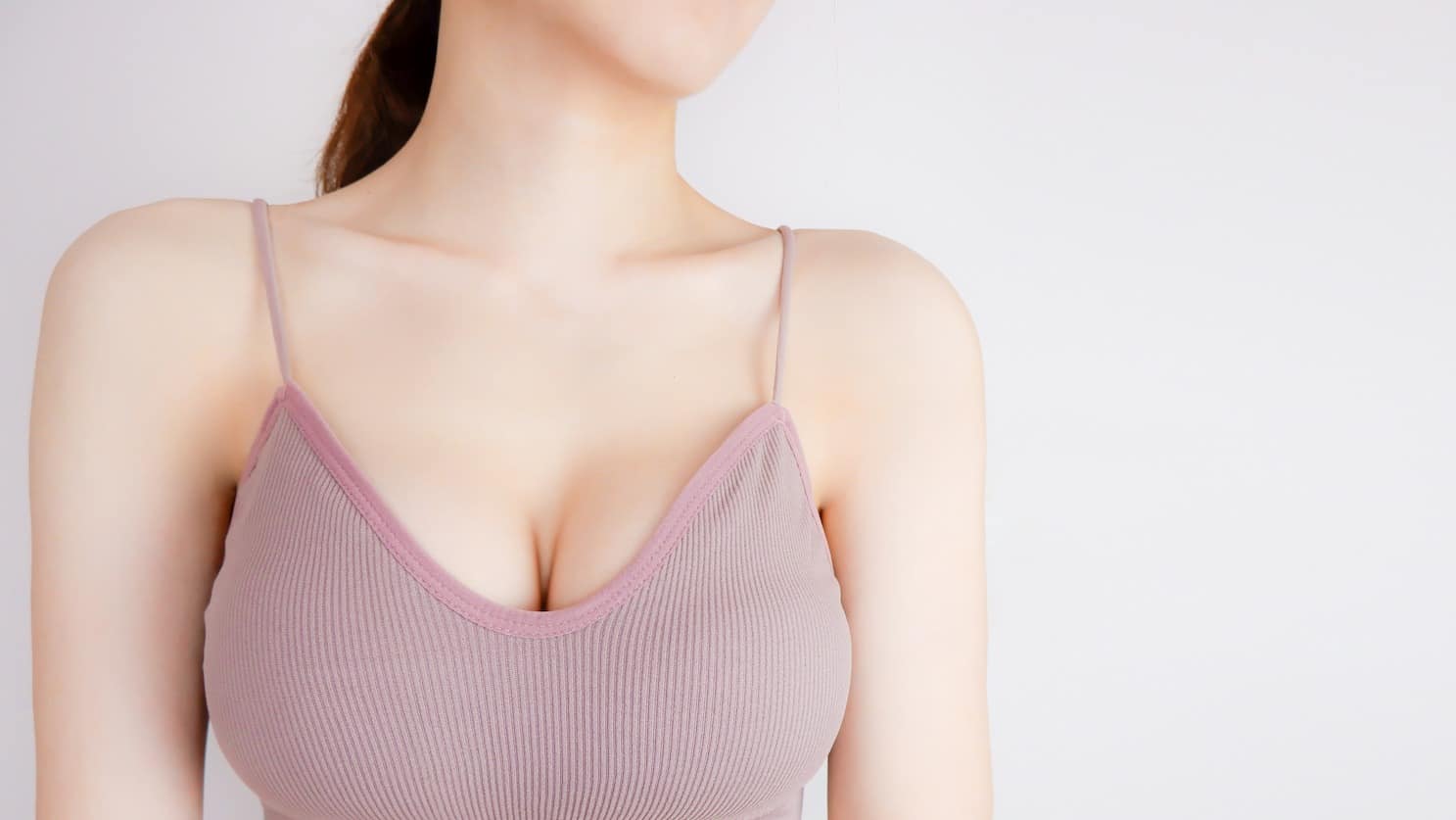Each year the International Society of Aesthetic Plastic Surgery publishes its global statistics, and each year breast augmentation is at the top of the charts again and again and again. Interestingly, research shows:
- 88% of women who choose augmentation surgery want to correct breast asymmetry
Before we look at how patients achieve their goals, Costhetics wants you to understand why one boob can be larger, smaller, or a different shape than its partner.
Asymmetrical Boobs: They’re Not in Your Head
Do you think of your breasts as twins? They are, but they are more like fraternal than identical twins. They share some similarities, but each is unique. (Like you.) The differences in size and shape can be dramatic or extremely subtle. Asymmetry is perfectly normal and may have a genetic component.
Asymmetry of the breasts is also common. Researchers in one study reported asymmetry in 91% of participants with differences related to characteristics including:
- Breast volume
- Height of nipples
- Differences in chest wall
Friends and loved ones often pooh-pooh an individual’s concern that her breasts are two different sizes. “You’re imagining it,” is a common response, but one that is completely off base. (This can be especially frustrating for adolescent girls whose growth spurts and changing oestrogen levels can play havoc with breast size and shape.) There’s no imagining this…
3 Reasons Boobs Look Unbalanced
A study on Breast Asymmetry in Women Requesting Plastic Surgery of the Breast found that non-identical breasts occur in nearly one in ten women due to one of these conditions:
- Hypoplastia – Women with hypoplastic breasts lack or have under-developed chest wall structures, including the ribs and pectoral muscles. It can be a problem in one or both breasts, leading to an asymmetrical bust line. Tubular breasts, where breasts droop and can resemble a sock filled with mud, are one type of hypoplastic breasts
- Macromastia (Breast hypertrophy) – This condition causes the breasts to become overly large, impeding physical activities and causing discomfort. It can be caused by poor breast positioning on the chest, excess breast weight, and/or excess breast volume.
- Ptosis – The most common breast complaint, ptosis is a medical term for a sagging breast. Ageing, pregnancy, and simple gravity all contribute to the development of female breast ptosis.
Now here’s what you can do if you’re unhappy with the appearance of uneven breasts…
Fab 4 Breast Asymmetry Surgeries
Many women are perfectly content with their breasts in all their beautiful unevenness. Others address the disparity of their breasts with lingerie rather than a cosmetic procedure. Still others are eager to make surgical changes to their silhouette. Costhetics believes nothing is more beautiful than individuality, so “You do you, Girl.”
The aim of these surgical procedures is to try to match the two breasts in size as closely as possible. If you would like to “even out the playing field” on your chest, Costhetics recommends you consult a board certified surgeon about:
- Autologous Fat Transfer – Fat transfer techniques have improved significantly and can be an effective solution to uneven breasts when performed by a technically skilled surgeon. AFT is best suited to cases of mild asymmetry and small irregularities in breast volume. Several sessions may be required for a patient to achieve her goals.
In AFT, fat is suctioned from a fatty part of the patient’s body, such as the abdomen or thighs. It is processed and purified, and re-injected into the breast. Advocates point to AFT’s natural look and feel, while detractors say more study is needed to examine issues including re-absorption.
- Breast Augmentation with Implants – Despite a recent voluntary recall of a major brand of textured implants, they are a relatively safe and effective way to address breast asymmetry. In some cases, one implant is used to enlarge the smaller breast. In others, reduction surgery may be performed on the larger breast, followed by placing equally sized implants in each breast.
The two-implants-are-better-than-one approach is a popular one. The procedure can help breasts better maintain their size and shape over time. Additionally, they will not be impacted by fluctuations in weight and/or the ageing process. A breast lift may also be appropriate.
- Breast Lift Plus – As the name suggests, this surgery raises the breast and tightens skin, bringing the nipple to a more elevated place on the chest. The ‘plus’ refers to the common practice of combining a lift with breast reduction or breast augmentation surgery to achieve ultimate balance.
- Breast Reduction Surgery – If the size of a smaller breast is desirable, this procedure is used to remove excess fat and skin. In some cases, the surgeon may suggest a breast lift if the nipple needs to be repositioned.
Will equal sized breasts make you the belle of the ball, the talk of the town, and the woman you’ve always wanted to be? Truthfully, Costhetics would have to say no to that one. It can, however, provide a boost of confidence and have a positive impact on your life. We can’t argue with that.
Stay beautiful.
